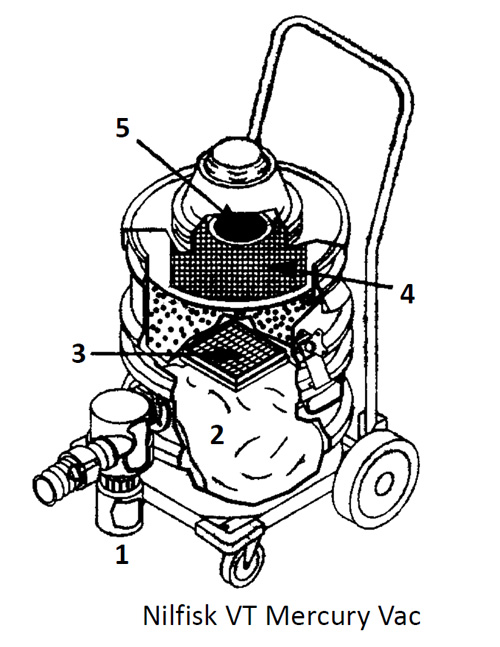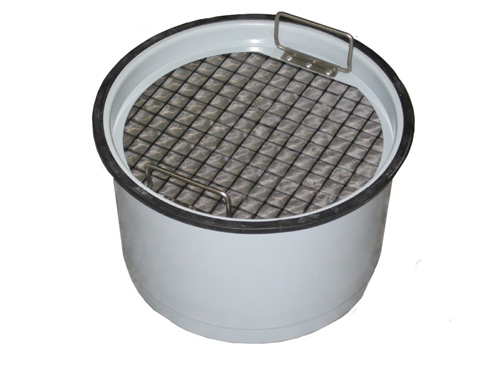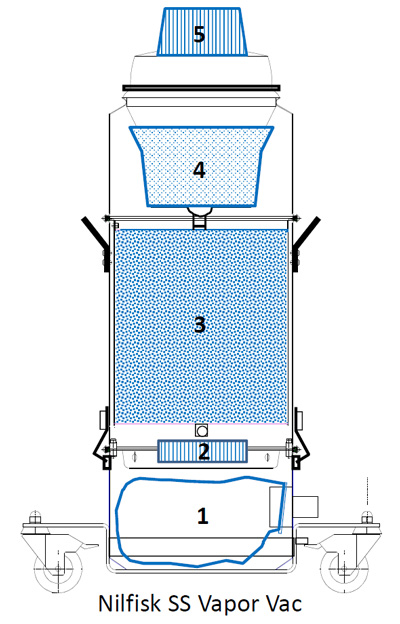 |
.jpg) |
|
Pressure Washers & Steam Cleaners Parts Washers Water Treatment Systems Vapor Steam Cleaning Equipment Floor Care Equipment Industrial Vacuums Ice Blasters Steam Generators & Hot Water Heaters Detergents & Chemicals Custom Design Equipment Accessories / Misc. Equipment Rebuilt Equipment |
Lorchem Learning Center | Principles of Filtration | Chemical Filtration This 3-part educational article will cover the three main types of filtration commonly used in today’s industrial vacuum cleaners: cyclonic, mechanical and chemical filtration. Every vacuum cleaner ever sold has incorporated at least one of these types of filtration. Some of the earliest vacuum cleaners only used cyclonic filtration while other, more complicated modern machines, use all three. Read more about each of these filtration systems in this 3-part article:
Before purchasing a vacuum cleaner, the buyer should have at least a basic understanding of the filtration system inside the machine. No matter how powerful, expensive or “feature rich” a vacuum cleaner may appear to be, a vacuum is only as good as the design of it’s filtration system. The main function of vacuum’s filtration system is to remove particulate (or vapors) from the airstream that could be harmful to the user of the vacuum or to the vacuum’s motor. Filters are often designed to capture a wide variety of different sized particles and different types of materials. Filters also need to last for a reasonable amount of time; they must be easy to replace and should not be overly expensive. Many different factors are considered during the design process of a high quality vacuum cleaner. None of them however, are more important than filtration. Go back to the Lorchem Learning Center. PART III: CHEMICAL FILTRATIONArticle courtesy of Nilfisk Industrial Vacuums Filtering gases and vapors requires a special type of filtration known as chemical filtration. Chemical filtration actually changes the physical characteristics of a gas or vapor, and in some cases transforms and renders it harmless. Vacuums that use this type of filtration are often used to “scrub” the air of a harmful vapor, which is why sometimes they are referred to as “air scrubbers”. The main ingredient in most chemical filters is carbon. Carbon is chosen because of it’s unique molecular structure and for the fact that it can be used to attract a wide variety of chemical vapors and gases. When a vapor enters a chemical filter, one of two types of chemical reactions typically takes place:
Chemical filtration vacuums often use a combination of cyclonic, mechanical and chemical filters because they may be required to collect materials in different forms (liquids, solids and vapors). To get a clearer picture of how these different forms of materials are collected and how the chemical reactions take place inside the carbon filter, we will dissect the filtration system of two special Nilfisk chemical filtration vacuums.
In order for the adsorption reaction to take place, the mercury vapor must stay in the activated bed of carbon for a period of time (dwell time). If there is not enough “dwell time”, mercury particles can escape the carbon filter. This escape process is referred to as “channeling”. On the right is a cut-away image of the Nilfisk VT Mercury vacuum. The first stage of filtration is a droplet separator (1) that uses cyclonic motion to filter out large mercury droplets before they enter the collection tank. A disposal paper bag (2) is an option for this machine and is used depending on whether the spill is wet or dry. An upstream HEPA filter (3) is used just prior to the activated carbon filter to prevent any tiny droplets of mercury or dust particulate from entering the carbon filter. The activated carbon filter (4) is full of carbon powder separated by layers of honeycomb which causes the mercury vapor to move in a zigzag pattern inside the filter. Air speed is governed by a restrictor plate device built into the base of the carbon filter to ensure that the mercury vapor has the right amount of dwell time in the filter. A microfilter (5) is added to prevent fine carbon powder from entering the motor. Since carbon filters work on a chemical basis, they only provide effectiveness for a limited period of time. This period of time is called “service life”. The carbon mercury filter was designed to provide a service life up to five years providiing that the relative humidity is controlled. If there is too much water present in the air, the filter may only provide three or four years of service. Nilfisk recommends to its customers to bag or seal the machine in plastic when not in use to prolong the life of the carbon filter. Shelf life must also be taking into consideration when using a chemical filter. Even if the filter is not used, the potency will diminish with time as the carbon gradually picks up atmospheric pollutant gases and moisture. Periodic testing with an instrument called a “mercury sniffer” is recommended to ensure that mercury vapors are not getting through the carbon filter. The sniffer device is placed into the exhaust air stream of the vacuum to detect the present of mercury vapor. It is the best and easiest method for determining if the carbon filter is still working.
The image to the left is a close-up photo of a Nilfisk VT Mercury activated carbon filter (looking at the top surface). The grid of small black squares you see is one of the honeycomb plates. This filter is very heavy (over 45 lbs.) because of the amount of carbon powder that is packed inside of it. Handles have been added to make the filter easier to remove from the vacuum.
The Nilfisk SS Vapor Vacuum is a vacuum commonly used in the semiconductor and chemical industries to capture harmful vapors which are the byproduct of many different manufacturing processes. The design of the carbon filter is this vacuum is identical to the one used for mercury vapors. The main difference is that the carbon inside is activated specifically to collect chlorinated solvents such as arsine and phosphine which are released during the growing of semiconductor wafers. The SS Vapor filter is also marked with a yellow stripe around the outside to distinguish it from the mercury filter.
Chlorinated solvent vapors consume the carbon more aggressively than mercury vapor so the service life of an SS Vapor carbon filter is only about two years. It can be less depending on the type and concentration of the vapor being collected. Use of a sniffer device is recommended to check the effectiveness of the filter periodically. On the right is a cut-away image of the Nilfisk SS Vapor vacuum. The first stage of filtration is a paper bust bag (1) used for capturing any large particles that enter the vac. An upstream HEPA filter (2) is used just prior to the activated carbon filter to prevent any dust particulate from entering the carbon filter. The activated carbon filter (3) is full of carbon powder separated by layers of honeycomb which causes the vapors to move in a zigzag pattern inside the filter. Air speed is governed by a restrictor plate device built into the base of the carbon filter to ensure that the vapors have the right amount of dwell time in the filter. A microfilter (4) is added to prevent fine carbon powder from entering the motor. Because most of these vacuums are used in cleanroom settings, the last stage of filtration is an exhaust HEPA filter (5) which captures any particulate given off by the motor. Chemical filtration vacuums are not very common. Only a handful of vacuum manufacturers even offer them. Nilfisk was one of the first. |


